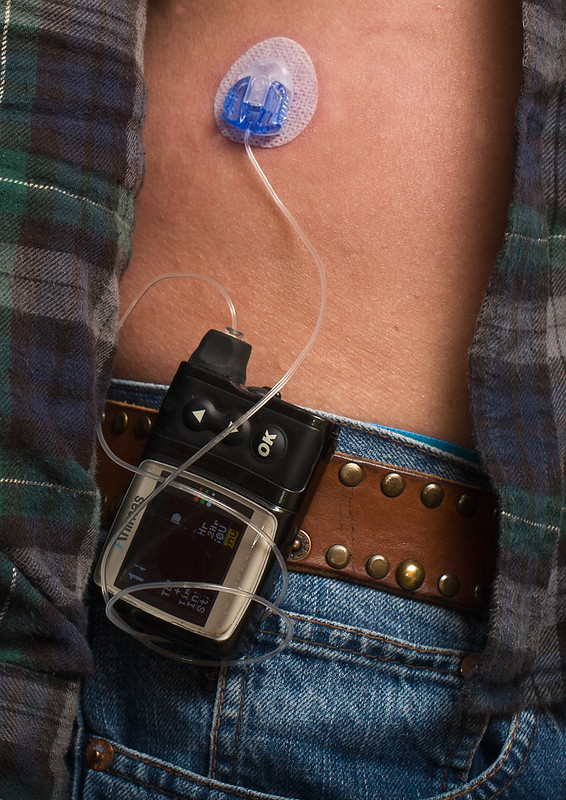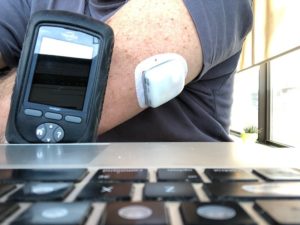I’ve been working on this post for a while, but yesterday a news story caught my eye that drove me to finish it. Apparently, the Transportation Security Administration recently and briefly confiscated a cane belonging to actor Peter Mayhew. In case you aren’t familiar with Mayhew, he is the actor who portrayed Chewbacca, and his cane is designed to look like a lightsaber. This cane apparently raised a few eyebrows and questions at a security checkpoint, because (according to a statement released by the TSA) of its “unusual weight.”
Let me be clear about a couple of things: 1) All humor aside, Mayhew’s cane is not a decoration, it is a medically necessary device. 2) Mayhew is tall. Really tall. As in 7-foot-2-inches tall. Shouldn’t it be obvious to anyone that a cane used by someone that tall is going to be larger and heavier than a standard cane? Had the TSA not released his cane, Mayhew — a regular at conventions all over the world and who travels a lot with this particular cane — would have been forced to continue his journey in a wheelchair.
Traveling with Body Worn Medical Devices
As a diabetic who travels regularly by air, I’ve been through experiences similar to Mayhew’s. I wear an insulin pump and because of the type of pump I wear, security checkpoints are much more frustrating for me than they should be. The type of insulin pumps that most pumpers wear — and that the public is more familiar with — were introduced in the 1990s (though insulin therapy itself was developed decades early, it was the tech boom of the 80s and 90s that made the technology smaller, easier to use, and accurate enough for popular use). They typically look like the image below.

With these pumps, a small cannula is inserted through the skin and secured in place by an adhesive patch. The cannula is connected via a length of tubing to a device that contains the insulin reservoir, a pump that delivers the insulin, and a controller that allows the user to adjust the amount of insulin delivered. The cannula can be inserted just about anywhere on the body, but the pump/controller is typically worn on the waistband.
Until recently insulin pumps hadn’t changed much since the 90s. Let me introduce you to my pump. I wear an OmniPod from Insulet. OmniPod is the first patch pump — a new category of insulin pumps (pictured below).

I wear a small “Pod” adhered to my skin, which inserts the cannula and contains the insulin reservoir, as well as the pump mechanics. A separate controller wirelessly communicates with the pump, telling it how much insulin to deliver. I wear the Pod on the back of my arms or my thighs, but it can also be worn on the abdomen, lower back, and upper haunches and I’ve even seen pictures of people wearing Pods on their calves. The controller is usually in my purse or briefcase.
Patch pumps are quite a change and are very different. They’re not what most people think insulin pumps look like. So when the Pod shows up on body scanners, it’s not what TSA agents are expecting to see – even when I warn them that I am wearing an insulin pump and where. Usually, it’s not a problem, I get waved to another agent and am asked to conduct a “self pat down of the insulin pump” followed by “an explosive trace detection sampling of the hands” (in the words of the TSA).
But I have had agents wrongly insist that they must pat down the Pod — once an agent did this too roughly and dislodged some of the adhesive holding it in place (which feels like a large bandage being ripped off). I have also had a couple agents tell me that they have to “visually verify” that the Pod is what I say it is — also incorrect, but try convincing a TSA agent of that, and not easy to accomplish when the pump is in an inconvenient location. I have twice had TSA agents ask me to disconnect it, which is not possible with this type of pump (I wear the Pod for three days – if I remove it early it is rendered useless and I have to put a new one on). Once I even had something on my hands that triggered a false alarm in the explosive trace detection, which led to extra testing and a missed flight.
But my point isn’t what I have to go through, nor is it to bash TSA. Quite the contrary, TSA agents have always been respectful and often quite curious about my OmniPod. Why? Because nearly every agent tells me that they’ve never seen a pump like this before. Why does this concern me? Why should it concern you? Because the OmniPod system has been available in the U.S. for nearly a decade (approved for use by the FDA in 2005). Why is the TSA so unaware of it? Are they equally unaware of other innovations in healthcare?
My personal experience is limited to the OmniPod, but working for a company that helps develop medical devices, I get to see the future of healthcare before it becomes reality. I’ve argued in articles and at conferences that we are experiencing a paradigm shift in healthcare; treatments previously envisioned only in hospitals or clinics and under the supervision of trained medical personnel, are moving into the home and being carried out by the average person.
The TSA is likely already encountering travelers with implanted heart pumps (which have external components), defibrillator vests, cochlear implants, advanced prosthetics, and many more medical devices that cannot simply be removed nor be roughly handled. Soon the TSA will be encountering travelers with artificial kidneys — in the form of portable dialysis, and even bionic eyes — the first of which was just approved. They may soon see a paraplegic walking through security with the aid of an exoskeleton.
Unfamiliarity with these newer medical devices on the part of the TSA could lead to profound problems. The idea of an implanted artificial heart, or other life-sustaining device, malfunctioning at 30,000 feet due to an inappropriate security screening should concern everyone, not just the patient and the flight crews.
As these and other advances in technologies are approved, how can we ensure that TSA agents are aware of them so that travelers with medical devices can pass through security without devices being mistaken for banned items or worse, being disrupted or even broken?
Photo Credits:
Featured image: “TSA Screener with Checkpoint Friendly Laptop Case” by Mobile Edge Laptop Cases is licensed under CC BY-SA 2.0 and superimposed over 1993MR2Turbo, CC BY-SA 3.0 via Wikimedia Commons
Tubed Insulin Pump by Alden Chadwick | Attribution 2.0 Generic (CC BY 2.0)
Omnipod Insulin Pump by Alan Levine | Public Domain
